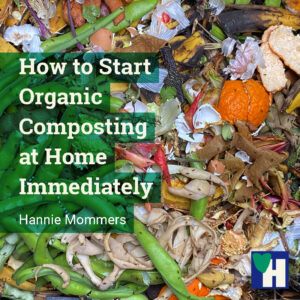
It’s such a long time ago that I started composting at home, I can’t even remember when it was exactly.
At first, it was done in a very simple way: I dug holes in the garden and threw the kitchen waste and coffee drab in them. Later we bought special containers that moved with us to every new house and even emigrated with us.
Over time, we have become more and more precise with what we throw in the compost heap. At first, I used to throw all our kitchen waste, tea bags, and coffee filters on the pile, nowadays we absolutely don’t want everything in the compost anymore.
In this article, I will explain what you should and should not throw on the heap. What requirements should an organic compost heap meet? What system can you use? Which materials and tools do you need? In other words, how do you start organic composting at home?
Some of the links are affiliate links. As an affiliate associate, we earn a commission when you purchase any of the products offered through the shared links at no extra cost for you. This helps us maintain this website.
Table of contents
What is composting?
Simply said, composting is the process of decomposing organic materials into simpler elements. The result is a rich earth-like substance that improves the soil of your garden or potting soil. It’s marvelous to use in the kitchen garden to fertilize your crop.
The time it takes for the organic materials to fully compost, depends on the mixture, the climate, the size of the twigs and leaves, the presence of decomposing organisms, and the management of the pile. In general, it will take 2 to 6 months to have the best result.
One of the advantages of composting our organic waste is that this reduces, by 20-30%, the amount of garbage we throw into the dumpster. Another one is that we give back to the garden the nutrients that we have extracted with our harvest.
How to start composting at home?
If you have a garden, you can start immediately the same way I did years ago: dig a hole somewhere between the plants, throw in your waste, and scoop the soil back over it. Is your garden large then you can make a heap in a corner.
There are compost containers without a bottom for sale. Or you can make your own from planks or from mesh frames.
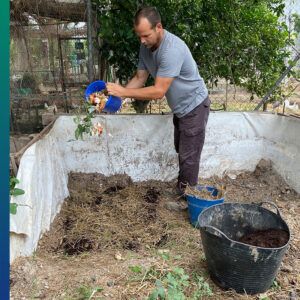
Composting is usually aerobic, which means that the air provides the energy for the composting process. This makes it very important that the compost bin is not completely closed. Our containers have a lid which we rarely use because of this.
Related: Grow your own Fruits and Vegetables Sustainably and Tasty
Living in an apartment?
When you don’t have a garden it’s a bit more complicated, because composting and a compost bin need space. There are some alternatives.
- You can use a worm bucket (if you are not averse to worms);
- A complete and closed system is the Bokashi bucket. The system is different from the usual way of composting because it’s an anaerobic system based on fermentation (meaning that no outside air is involved). Because of this, you can throw many things in the bin that you’d better not put in the aerobic compost pile;
- If there are allotments or a community garden in your neighborhood you can ask whether it’s possible to bring your organic waste over there.
What are the steps in the composting process?
In optimal conditions, equal parts of garden waste, kitchen waste, and soil are mixed together. In addition, other things such as lime, horse or sheep manure, or compost accelerator can optionally be added.
During the composting process, the pile needs water. We have a bucket in the sink under the tap. Every time we rinse something, such as our hands, the excess water is collected in the bucket. When it is full, Tom throws the water on the pile.
In addition to water, air is also needed. From time to time it is necessary to turn the stack over so that the matter gets enough air.
If you only buy organic produce and do not use pesticides and herbicides in your kitchen garden, you have an excellent toxic-free mixture to condition the soil. We even buy our potting soil at the ecological store.
What goes into the compost heap?
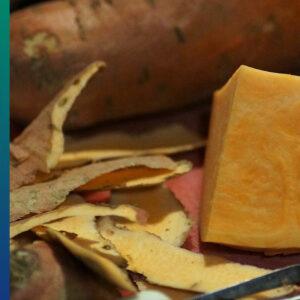
- Biological scraps;
- Kitchen waste;
- Coffee drab;
- Eggshells;
- Vegetable oil;
- Leaves;
- Straw;
- Unbleached paper and kraft;
- Chicken, goat, cow, and horse manure;
- Weeds that are not yet in bloom;
- Withered plants;
- Finely chopped prunings.
Build layers of green, brown waste, and soil, and put the layer of the soil always in last to avoid a bad smell and fruit flies.
What should you not put in compost?
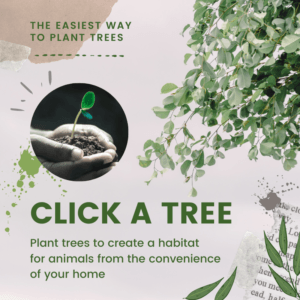
- Cooked food;
- Non-biological scraps;
- Citrus peels. They digest slowly and are acidic, which hinders worm activity;
- Overblown weeds;
- Seeds. They will germinate in the compost bin or later in your garden;
- Sick plants;
- Meat and bones;
- Fish and fish bones;
- Pet feces and cat litter;
- The paper of tea bags and coffee filters. Usually, these contain glue with plastic particles;
- Stones, plastic, metal, glass;
- Bleached and/or printed paper;
- Branches that are too big.
Which materials do you need?
To begin composting you’ll need some tools and materials to get started. Many of these items are at the hardware or gardening store. Some you can make yourself. You can also buy home composting kits. These kits come with everything you need and provide a relatively smell-free composting experience.
- Compost bin or bottomless crate;
- Bucket(s);
- Shovel;
- Pitchfork;
- Well-drained area in the garden.
Organic composting at home
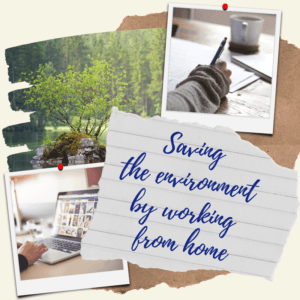
It’s very easy to make your own compost. Try out what method pleases you most. For instance, at first, we had a bucket in the kitchen cupboard under the sink and emptied it every couple of days on the pile. But it smelled too much to our liking.
Now we have a plate on the sink and empty it as soon as there is too much on it. We should cover it immediately with soil but most of the time we take the fruit flies for granted. The pile is far enough from the house.
We have 2 containers. One gets filled layer by layer. Sometimes we get some horse manure from a neighbor, which goes in as well. Every now and then we stir through the bin. When it’s full, the last layer of soil is a bit more than usual and then we leave it alone for a couple of months. And continue in the other container.
Do you make your own compost? Tell us in the comment box below.

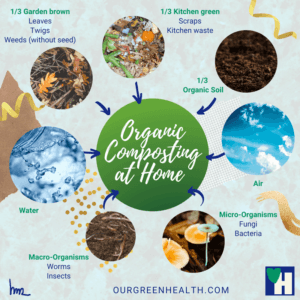
I recently went to visit a friend and he was in his back yard raking a pile of leaves. He then showed me how he was preparing organic material for composting. Then he showed me how some of his plants looked (they looked good with the compost). And it really excited me. I’m glad I found your site. I particularly found it useful that you mentioned the things that should not be put in compost.
I was very interested in reading this article, because I’d like to start a proper composting system. So far I have just been throwing organic food leftovers into the garden and it has been beneficial, but having a compost system would be much better, so that I can spread the compost out over different parts of the land.
The only problem is the flies. There are many flies where I live, so is there a way to keep them away? Should I use a lid on my compost bins?
Hi Christine, I am glad you liked it. 🙂
A lid is not necessary. What you need to do is throw a thick layer of soil on the leftovers. Ideally, you also have a lot of garden waste (leaves, twigs, and little branches). So, start with a layer of organic waste (green), then a layer of garden waste (brown), and last a layer of soil. You have a big terrain, making sure you also have lots of garden waste. And hopefully, your soil is loose enough to be easily scooped up and thrown on the pile.
Unfortunately, we have mainly rock and very hardened soil in our garden. It hasn’t been touched for years, so it’ll take a while before the ground is loose enough to handle. That’s why for the time being we buy organic potting soil in a village nearby.
Good luck with your compost pile. 🙂
Hey Hannie, first of all I would like to say that I love your site because you talk about all things organic! I am always looking for eco-friendly ways to make my health and overall life choices better. Your site will be top on my go to list and I look forward to what you will be writing next. I am a subscriber!
Secondly, this post is so useful and totally resonates with me. I live in a stacked townhouse and my community surprisingly does NOT have a compost bin!! So I usually just keep my compost in a bin with a lid next to my sink on top of the kitchen counter. It is relatively a small bin so that I remember to dispose of it every time it gets full. I use biodegradable bags and when full, I dump it in my makeshift garden in my mini backyard. It has been working great so far! But every now and then I struggle with wondering what goes in it or not so I am glad you broke it down nicely in this post.
Thank you for this informative post and keep up with the great work! Let’s make this world greener again! 🙂
Hi Sasha, thanks so much for the compliment. That’s always a pleasure to hear. 🙂
I wonder what your experience with the biodegradable bags is? We had them as well, back in the Netherlands when we lived there, but it disappointed me how much time it took before they were assimilated into the soil. They are ideal for inside the house, so I can imagine you use them.
Maybe there lies a beautiful task before you: making a community composting bin. Or even start a community garden. 😀
Have a look at this part of one of our articles, in which we mention some we saw.
Thanks for your comment and YES, let’s make the world greener. 🙂
When I was a kid (living in a village), we had compost in our garden. I think that everyone should have that. We throw away too much food, and having compost is one way to do something good with the food leftovers.
Now I live in a city, and the city provides every building with a compost tank. We all throw food leftovers there, which is better for the city (less trash) and better for nature. One neighbor always uses it in his garden when the composting process is completed.
Wow, Petar, it’s so great to have separate waste streams with a compost tank in between. I wish Spain was more interested in such a way of dealing with city waste. Where I am, in the South of Spain, they burn the garden waste. 🙁
And when we were doing our daily hike on the mountain, one of the farmers was spraying inside his greenhouse with some poison.
For me, that would be a concern with a city compost tank: what do people throw into it? We are so lucky to have our own compost pile. That way we can be sure it’s organic, as we only grow and buy organic produce and nothing else.
But I am not looking down on the collective tank. It’s better to have at least something than not having a choice at all. So chapeau for your city council. 🙂
Thanks for responding to my article and take care!
I was a fan of my friend’s house plant and always wondered what is the secret of growing beautiful and healthy plants. When I asked her, she told me that she started composting at home a year ago. I didn’t know what it was, so I searched online and found out about your blog. Thank you for this article. It helped a lot. I started using coffee drab and eggshells.
Marvelous, Kate! Coffee drab and eggshells are a good start. You could even sow in half the eggs with a bit of drab and some soil. As soon as the seedlings start to grow, you can put them eggshells and all in a pot with soil.
This whole process is so stimulating to watch and so relaxing to be busy with. I love it to have some pots in my room with herbs. At the moment I have a stray pepper seed in one of the herbs pot that has sprouted and now even carries a small, bright yellow pepper.
It was a real pleasure to watch the plant grow and bloom. And because it was indoors, so there were no bees present to fertilize the flowers, I acted like a bee with a small, soft brush and pollinated the flowers. Can you believe my luck that peppers actually grew on the plant? I love it.